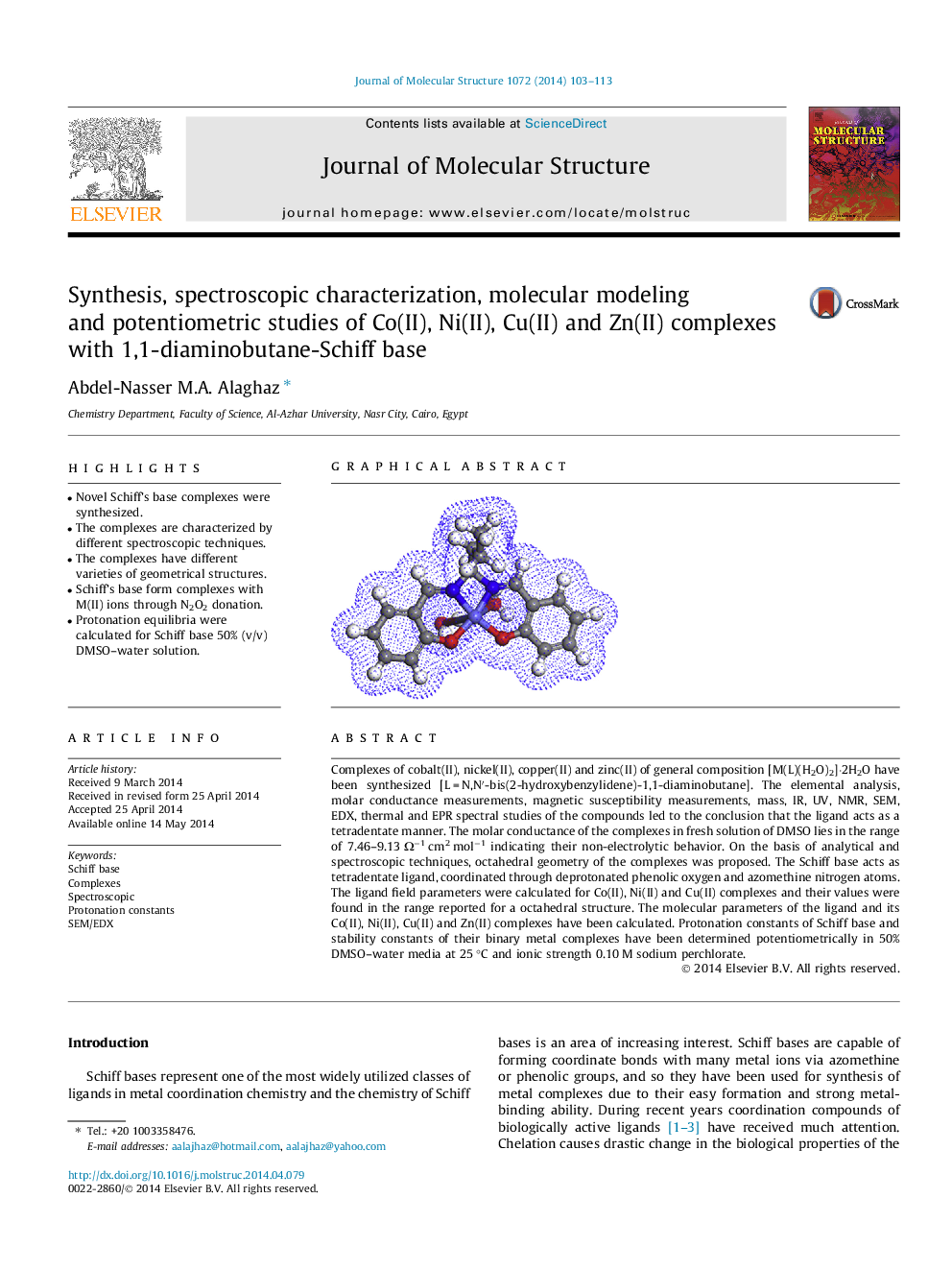| Article ID | Journal | Published Year | Pages | File Type |
|---|---|---|---|---|
| 1405030 | Journal of Molecular Structure | 2014 | 11 Pages |
•Novel Schiff’s base complexes were synthesized.•The complexes are characterized by different spectroscopic techniques.•The complexes have different varieties of geometrical structures.•Schiff’s base form complexes with M(II) ions through N2O2 donation.•Protonation equilibria were calculated for Schiff base 50% (v/v) DMSO–water solution.
Complexes of cobalt(II), nickel(II), copper(II) and zinc(II) of general composition [M(L)(H2O)2]·2H2O have been synthesized [L = N,N′-bis(2-hydroxybenzylidene)-1,1-diaminobutane]. The elemental analysis, molar conductance measurements, magnetic susceptibility measurements, mass, IR, UV, NMR, SEM, EDX, thermal and EPR spectral studies of the compounds led to the conclusion that the ligand acts as a tetradentate manner. The molar conductance of the complexes in fresh solution of DMSO lies in the range of 7.46–9.13 Ω−1 cm2 mol−1 indicating their non-electrolytic behavior. On the basis of analytical and spectroscopic techniques, octahedral geometry of the complexes was proposed. The Schiff base acts as tetradentate ligand, coordinated through deprotonated phenolic oxygen and azomethine nitrogen atoms. The ligand field parameters were calculated for Co(II), Ni(II) and Cu(II) complexes and their values were found in the range reported for a octahedral structure. The molecular parameters of the ligand and its Co(II), Ni(II), Cu(II) and Zn(II) complexes have been calculated. Protonation constants of Schiff base and stability constants of their binary metal complexes have been determined potentiometrically in 50% DMSO–water media at 25 °C and ionic strength 0.10 M sodium perchlorate.
Graphical abstractFigure optionsDownload full-size imageDownload as PowerPoint slide
